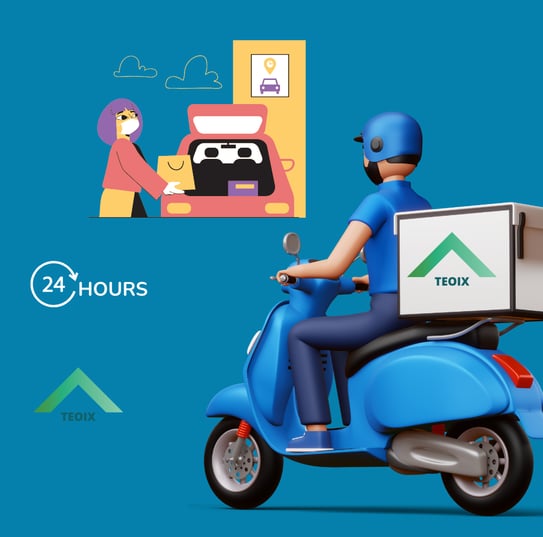The Rise of Curbside Pickup: A New Norm in Retail
BLOGS
6/5/20244 min read


Due in large part to the COVID-19 pandemic's unexpected impact and changing consumer expectations, curbside pickup has quickly gained traction in the retail industry. This service reduces in-person interaction and streamlines the shopping process by enabling customers to place orders online or over the phone and pick them up from prearranged pickup locations outside the store. This article examines the development, advantages, difficulties, and potential future developments of curbside pickup in retail.
The Evolution of Curbside Pickup
Although curbside pickup is not a brand-new idea, its uptake has increased significantly in recent years. At first, it was a convenience provided by a few forward-thinking merchants hoping to improve customer support and take on internet behemoths like Amazon. But the COVID-19 epidemic served as a catalyst, forcing merchants in a variety of industries to quickly implement this service in response to customers' shifting purchasing preferences and safety concerns.
Curbside pickup was primarily observed at grocery stores and restaurants prior to the epidemic. It gave harried customers a practical way to pick up their meals without getting out of their cars. Other retail industries, such as clothing, electronics, and home products, started to provide curbside pickup as lockdowns and social distancing measures went into place in order to preserve sales and guarantee consumer safety.
Benefits of Curbside Pickup
Convenience:
Curbside pickup is the most convenient option available. Clients can shop from the convenience of their homes and pick up their orders whenever it's convenient for them. This removes the necessity of navigating packed stores and standing in lengthy checkout queues.
Safety:
Curbside pickup became a vital service during the pandemic, helping to ensure social separation and reduce physical contact. By allowing clients and staff to keep a safe distance, it lowers the possibility of virus transmission.
Efficiency and Speed:
Curbside pickup is a speedier option than typical in-store shopping for customers who are stressed for time. Orders can be prepared ahead of time by retailers, allowing customers to pick up their items as soon as they arrive.
Cost Savings:
Curbside pickup can help consumers save a substantial amount of money on delivery expenses, particularly for bulky or heavy purchases. Additionally, it lowers the retailer's operational expenses by removing the requirement for delivery logistics.
Improved Customer Experience:
Providing curbside pickup has the potential to raise client satisfaction levels. It offers a smooth purchasing experience that blends the convenience of internet buying with the instant satisfaction of in-person transactions.
Inventory Management:
Curbside pickup aids in the more effective management of inventory for shops. They may fill orders with current inventory, which lowers excess inventory and related expenses.
Challenges of Curbside Pickup
Curbside pickup has advantages, but there are a few issues that retailers need to resolve if they want it to succeed:
Operational Complexity:
Curbside pickup implementation necessitates considerable adjustments to store operations. To effectively handle orders, retailers must set aside designated pickup locations, provide staff training, and make technological investments.
Technology Integration:
Online ordering platforms, inventory control software, and customer communication tools must all work together seamlessly for curbside pickup to be successful. Retailers need to make sure that these operations can run well on their IT infrastructure.
Staffing and Logistics:
Especially during busy hours, curbside pickup logistics might be difficult to manage. Without enough planning, retailers may find it difficult to manage curbside orders and in-store consumers when it comes to personnel availability.
Customer communication:
A good curbside pickup experience depends on prompt and clear communication. Retailers are required to give consumers clear directions on when and how to pick up their orders, as well as to contact them as soon as their goods are prepared.
Space and Traffic Management:
Retailers must provide aside enough space for curbside pickup operations in order to prevent traffic jams and maintain a smooth flow of traffic. This can be especially difficult in cities where parking is scarce.
Future Prospects of Curbside Pickup
Curbside pickup is predicted to continue to play a big role in the retail scene as long as customer behavior does. Its future is anticipated to be shaped by a number of trends and innovations:
Integration with Omnichannel Strategies:
Retailers will progressively include curbside pickup into their more comprehensive omnichannel strategy in order to provide customers with a smooth and uniform shopping experience throughout all touchpoints.
Improved Technology:
As technology develops, curbside pickup operations will become even more efficient. Efficiency and customer happiness will increase with innovations like AI-driven customer notifications, automated order processing, and real-time inventory management.
Extension to New Industries:
Curbside pickup is currently prevalent in general retail and grocery stores, but it's expected to spread to other industries including home improvement and healthcare (for prescription pickups).
Sustainability efforts:
Stores may have curbside pickup options that integrate sustainability efforts. This can entail encouraging the use of reusable containers, utilizing eco-friendly packaging, and scheduling pickups to minimize carbon footprints.
Personalization and Customization:
Retailers may provide more individualized curbside pickup experiences as they collect more data on consumer preferences and activities. This may entail personalized promotions, suggestions, and loyalty incentives.
Conclusion
Because of the requirement for efficiency, safety, and convenience, curbside pickup has evolved from a specialized convenience to a general retail offering. It has several advantages for customers and retailers alike, such as increased safety, lower costs, and better customer service. It does, however, also bring with it difficulties with logistics, technological integration, and operational complexity.
Curbside pickup is expected to play a major role in the future development of the retail ecosystem. Retailers will be well-positioned to profit from this expanding trend if they prioritize customer communication, optimize their operations, and invest in technology. The retail industry's capacity to remain competitive and spur growth will depend on its ability to provide easy and adaptable shopping options, such as curbside pickup, in light of the constantly changing expectations of consumers.


